Save The Ocean
Improve Global Living Standards
February 1, 2022Reduce Pollution
February 3, 2022Save The Ocean
IN DEVELOPMENT
Do you have ideas and possible solutions on ways to save the ocean? The world needs you! Please share your ideas in the comments below. Together we can create awareness and find solutions to help humanity move forward stronger than ever before in history.

Ideas & Possible Solutions
• New ideas and possible solutions on ways to SAVE THE OCEAN coming soon.
• Got ideas? Leave it in the comments below. We will add your ideas here.
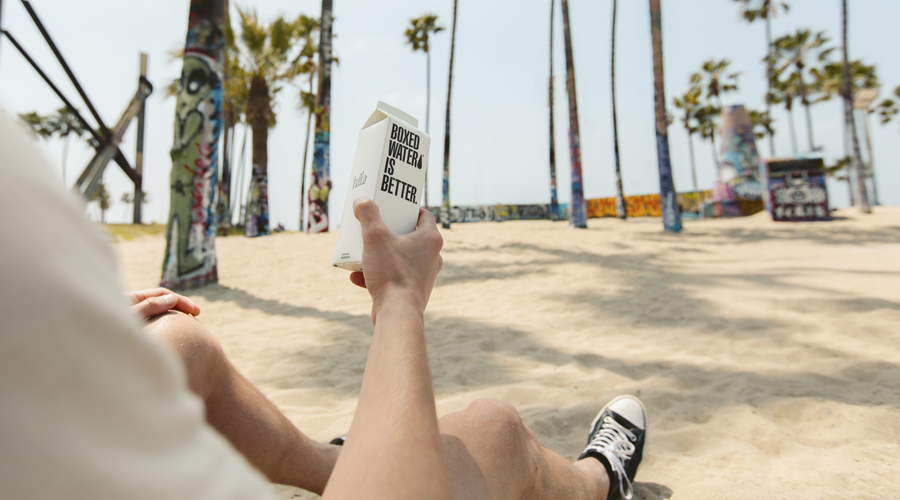
Things You Can Do To Help Save The Ocean
We often talk about increasing the forest cover because the forests are regarded as the ‘green lungs’ of the planet as they provide us with multiple benefits. But, we negate the fact that the ‘blue lungs’ – oceans, need to be given the similar importance for the significant role they play in sustaining our lives...
Oceans provide us with oxygen, sequester atmospheric carbon, serve as means of livelihood, regulate our climate pattern and provide habitat to millions of aquatic species that have their own ecological role to play.
Sadly, these oceans receive little appreciation from our end and are exposed to several stressors such as plastic pollution, acidification, oil spills, diminishing fishing stock, industrial sewage discharge, and contamination due to urban runoff.
Disappointing isn’t it? Don’t worry; we have compiled a list of 23 simple and easy ways you can opt to foster ocean conservation:
1. Only Buy Sustainable Seafood
According to the Food and Agricultural Organization, the per capita fish consumption increased from 9.0 kg in 1961 to 20.5 kg in 2018, and the demand is projected to increase further in the coming years. Unfortunately, the majority of the caught fishes are unsustainably sourced which leads to diminishing fishing stock in our world’s oceans - resulting in an overall decline in the oceans’ health.
You can help improve the health of these oceans by buying fish or seafood which has been caught or farmed in a sustainable and ethical way. Want to find sustainable seafood? Well, it’s now just a click away. Find here!
2. Use Reusable Bags
Every year about 100,000 marine mammals are killed worldwide by ingesting or getting entangled in plastic. Plastic bags are often confused with the jellyfish or different prey species, these poor marine mammals feed on. The victims of our unethical practices do not have the ability to distinguish between floating plastics and their prey, but we have the ability to make informed decisions.
Ditch plastic bags out of your lives and use reusable or biodegradable bags to save ecologically significant marine creatures.
3. Avoid Single-use Plastics
The world produces over 300 million tons of plastic each year, out of which 8 million ends up in the world’s oceans. The commonly used plastic products such as straws, bottles, cups, and boxes degrade into microplastics which accumulate in the food chain and make their way back to us when plastic-contaminated seafood is consumed.
You can prevent single-use plastics from ending up in the oceans by switching to sustainable alternatives like bamboo straws, reusable bottles, and degradable cups.
4. Choose Skin-care Products Carefully
Toxic chemicals found in beauty products drain into water systems taking lives of millions of aquatic species. Beauty creams have been found to contain mercury higher than the permissible limit and pose a severe risk to ocean ecosystems and human health.
Using organic and natural beauty products can help reduce ocean pollution.
5. Use Eco-friendly Detergents
Commonly used detergents may appear to be a perfect fit for removing hard stains but they often comprise phosphates which are the key cause of algal blooms in water bodies. The decomposition of algae depletes the oxygen reserves of aquatic life and threatens their survival.
Explore eco-friendly detergents to make a sustainable choice.
6. Reuse Old Clothes
The trendy fast fashion is polluting our oceans at an alarming rate. It has been estimated that the world’s oceans could comprise 22 million tons of microfibers by 2025. Every time we wash our clothes, these microfibers make their way to water systems. Like microbeads, these microfibers are synthetic plastics that enter and accumulate in the food chain. Being a responsible consumer, you can prevent the discharge of microfibers by buying less and reusing old clothes.
7. Avoid Buying Coral Jewelry
Corals serve as buffers – preventing storms and floods. Commercial harvesting of corals for jewelry is a centuries-old tradition. Unfortunately, due to ocean acidification and coral bleaching, this vital natural resource is threatened. Instead of purchasing jewelry made out of corals, invest in coral restoration programmes.
8. Be Mindful of Your Hobbies
If you want to keep a fish tank at your home, be mindful of the fish species you choose to keep in the fish tank. Keeping threatened species as pets might push the species to the brink of extinction.
Even if you are inspired by the movies which portray the lives of certain species, do not insist to keep them as a pet. Check the species population status here.
9. Quit Smoking
By now, you certainly know that smoking is injurious to health. Did you know it could be lethal for oceans too? Cigarette butts make a major portion of marine debris. Besides being a source of plastic, the cigarette filters also release contaminants absorbed while smoking which includes harmful substances such as nicotine.
Quitting smoking isn’t easy for an addict but it can surely be a way to protect the ocean.
10. Properly Dispose of Hazardous Material
Improper and unethical disposal of hazardous materials releases toxic chemicals in oceans, which end up destroying the food chain. These materials could include batteries, solvent-based paints, and motor oil. Sometimes, the release of oil or paint forms a layer on the water surface, thus suffocating the species underneath.
Look out for companies that might be willing to pick up the waste from your home
Check out the labels on packaging to identify proper disposal method
11. Reduce Your Carbon Footprint
Global increase in Earth’s surface temperature is resulting in ocean acidification and warming, which affects the ocean’s ability to sequester carbon and provide oxygen. You can adopt simple ways to reduce your individual carbon footprint:
Plug out the charger when the phone is completely charged
Off-set your travel footprint and adopt a healthier lifestyle. Prefer walking, cycling, or riding on public transport over car12. Raise Your Voice, Not the Sea-level
Advocate for ocean conservation. Reaching out to the masses is not a big deal now. Make use of your skill-set to sensitize and educate people about threats to oceans and the practices which can protect oceanic health. Do what you can and lead the way. Write, sing, draw, illustrate, train, play, and design to connect with people and make your voice heard.
13. Be a Responsible Diver
Are you fond of diving? If yes, you can play a role by collecting trash or marine debris while you are out diving. Just in case you are wearing goggles and gloves, don’t forget to bring them along when you get out of water. Leaving the accessories in water would only increase plastic pollution.
14. Volunteer
There could be no greater joy than volunteering for a cause. Volunteer with local organizations, schools, and clubs to organize beach cleanup drives. Collect trash and donate it to local recycling facilities.
15. Donate
Monetary help could be one of the best ways you can help conserve oceans. Look out for local, national, and international organizations working for improving the health of oceans. Become a member, subscribe to the newsletters, donate, and raise funds to contribute towards the cause.
16. Maintain an Ocean-friendly Garden
If you are fond of gardening, choose to go organic. The run-off from your backyard could pose a threat to the marine ecosystem. The use of synthetic fertilizers might result in temporary growth of your plants, but they will ultimately result in creating algal blooms. Gardening lovers should try organic gardening for the sake of ocean conservation.
17. Choose a Restaurant with a Sustainable Menu
One of the best initiatives you can take to save oceans is to support and encourage those who are pursuing it already. There are a lot of restaurants who offer sustainable menus. One such example is Captain’s Galley located in Scotland where the owners use only locally produced and available seafood with the 15-mile radius. They value sustainability over menu size. In fact, their menu items change constantly depending upon what’s available. By choosing such restaurants, you are playing your role in conserving oceans.
18. Buy Microbeads-free Scrubbers or Facewash
Although it doesn’t look like a big problem, microbeads are not captured by most of the waste water treatment systems and end up in rivers, lakes and oceans. Once they reach in water sources, they can create damaging impacts for marine life, environment and several health issues are associated with it.
19. Watch What you Flush
It is a growing concern that tissue/toilet papers and wet wipes pose a threat to the environment. Although, they might be labeled as flushable doesn’t mean that they are biodegradable. And when such waste ends up in water sources, they create harmful consequences for aquatic life.
20. Practice Safe Boating
Safe boating also includes avoiding “no wake” areas among many others. This is because certain areas are sensitive and when a watercraft creates a wake, large waves are formed as a result which are harmful for the animals in the surrounding areas. If many small boats are creating waves, it may add up to create a large wave which results in disrupting local marine life.
21. Limit Car Washing
Most of you must be aware of the fact that waste water from the car wash contains oils, detergents, greases and other harmful substances that are responsible for degrading water quality and harming marine life in oceans as this waste water eventually enters oceans.
22. Support Protected Areas
You might have heard of Marine Protected Areas (MPAs) which are established and managed by governments which may include but are not limited to oceans parks, marine wildlife refuges and sanctuaries. The reason for establishing MPAs is to conserve ecosystems and sustainable fisheries production. We should be aware of the local laws of such protected areas and abide by them.
23. Choose Eco-travel Options
Sustainable tourism helps protect oceans. It includes eco-friendly boating, whale-watching and snorkeling. These are considered eco-friendly travel options as they pose no threat to aquatic life. On the other hand fishing may disturb the population of a certain area in a given time. Therefore, we should opt for Eco-travel and encourage others to do so.

Ocean Innovations & Technologies
As projected, by 2050 oceans could have more plastic by weight than fish. To curtail this challenge, several companies and scientists have been working for decades to bring a sustainable solution to the ever-growing problem. Several technologies and innovations have been made in this regard.
Inventions and technology linked to cleaning up and improving the health of the oceans are listed below...
1. Seabin V5
Seabin V5 gathers the floating plastic waste in calm waters. Water is pumped into and out of the filter bag while trash is captured inside the bag. It captures trash up to 44 pounds/day and is installed in areas with minimal marine life, thus it is less threatening to micro and macrohabitat.
2. Mr. Trash Wheel
Mr. Trash wheel is a magical innovation that captures the trash through a conveyor belt and later converts it into electricity. It operates in rivers and streams and prevents millions of pounds of trash to dive into the ocean.
3. WasteShark
WasteShark is an aqua drone that collects the trash from rivers and harbors it before the tides carry it into oceans. It floats on the surface of the water and collects the trash and water quality data simultaneously. It can be routed in heavily polluted areas.
4. Magnetic Coils
Nanotechnology could also bring a solution to marine pollution. Nitrogen and manganese coated on magnetic coils can react with oxygen molecules. This chemical reaction decomposes the microplastic floating into oceans into environmentally benign products like water, carbon dioxide, and salts. Various toxicity and antimicrobial properties testing are underway.
5. SeaVax Robotic Ship
It is a solar and wind-powered robotic ship to collect plastic waste from oceans. Renewable energy sources run the electric pumps and filters which trap the trash. The larger particles and pieces of trash are further converted on board to smaller ones. It can carry up to 150 tons of waste until offloaded or recycled.
7. System 001-Ocean Cleanup
To capture the trash from the Great Pacific Garbage Patch, System 001 and System 001/B were tested initially. These systems consist of polyethylene pipes with a 3 meters skirt underneath. Advanced System 002, which is durable with trash retaining ability for longer, will be in the ocean by 2021. It is expected that 60 such fleets would clean the area by capturing 50 percent of plastic in five years.
8. 4Ocean
To combat pollution in oceans, 4Ocean has adopted an entirely different approach. This company aims to remove one pound from selling a $20 bracelet. Fishermen and boats collect trash from the sea and beaches.
9. Sea Robots
Robots are removing the barrier often faced by lack of manpower or movement too far areas from the land. A robot machine (Wave Glider SV3 ) collects the data by taking photos and samples from the sea bed and other creatures. It also collects information about ocean depth, weather, and trash.
10. Safety Nets
Every day, millions of marine mammals are thrown back to the ocean when haul surpasses the quotas. This unsustainable act creates a danger to marine life. To overcome this loss, smarter nets are developed which have LED rings and bigger holes. These openings allow juvenile fish and other sea animals to escape back into the ocean.
11. Ice Tracking Technology
The remote sensing technology has allowed the development of Ice trackers for example Rutter’s sigma S6 to create an early warning system for floating icebergs to oil platforms. This system can alert in advance and enables strategic movements around the ice.
12. The Great Bubble Barrier
The Great Bubble Barrier is successfully installed in various canals and streams. A barrier of bubbles is created by pumping air through perforated tubes lying at the bottom of the river and canal which brings the trash to the surface. The trash is moved along the banks from where it is collected for further processing.
13. Searious Business
The operations to decrease the level of pollution in oceans are multivariate in nature for instance Searious Business. They are reducing the pollution generation at source by circular use of plastics. It ensures a decrease in the carbon footprint of the company and offers alternatives for material selection and packaging.
14. Smart Infrared Based Remotely Operated Vehicle (ROV)
A young inventor from Massachusetts has designed a robot that detects microplastics in oceans. The robot uses infrared and visible light and carries a high-resolution IR camera. The images taken by bots are used to identify the places accumulating microplastics on the ocean floor.
15. Plastic-eating Enzyme
The plastic used in packaging is the main culprit in polluting the oceans of the world. Scientists have developed an enzyme PETase, that can efficiently degrade the PET plastics into reactants. This scientific development is a major breakthrough and extremely beneficial for Mother Earth.
16. PlanetCare’s Washing Machine Filter
Another innovation for decreasing the pollution at the source is the washing machine filter. It is able to retain the microfiber that is 0.5 mm in size thus preventing these fibers from entering the oceans. These fibers are dangerous to aquatic life and often suffocate the fish.
17. Satellite Observation of Ocean plastics
Satellite-based observation is very helpful in determining the hotspots for plastic and trash accumulated in oceans. Marine Debris Tracker allows its users to report the trash they see in waterways or beaches. The data is ultimately used to draw the maps for subsequent actions.
18. Road-Surfacing with Ocean Plastic
Problem-based action is indeed essential in a cleaner environment. Fishermen in India collect trash from the ocean when they go fishing. The collected plastic is then sent to a special machine where it is converted into material for surfacing the roads.
19. Edible Packaging
Besides other innovations and developments working at a larger scale, some actions taken at a personal level are also creating big differences. Scientists have developed biodegradable packaging made of seaweed which is consumable. So, you drink water but no bottle waste is generated. Similarly, to improve the health of oceans, we can choose to opt for biodegradable materials such as cutlery and products of common use.
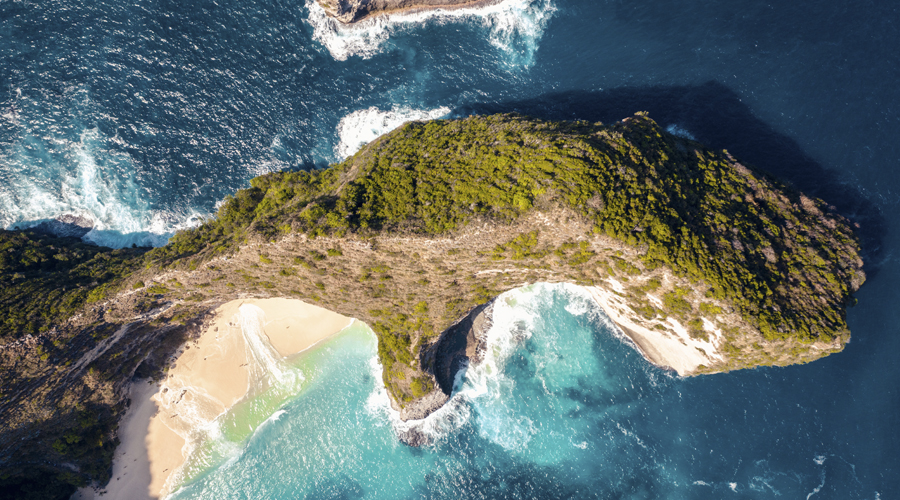
Strategies for Businesses to Become Ocean-friendly
Oceans sustain life on our planet Earth. Besides serving as a habitat for species, they provide us with food and means of livelihood. In addition, they also regulate our climate system. ...
It is important to adopt the practices which help protect the health of the oceans. For this purpose, everyone has to play a role including individuals, academia, policy members, businesses, and corporates.
Are you the owner of a small or medium enterprise? Or are you a part of a renowned industry? Looking for ideas on how you can help make a difference? Don't worry. Have a look at a few ideas compiled below, to get yourself inspired!
1. Plastic-free Cafe and Restaurant
If you own a cafe or restaurant, you can encourage the ban on single-use plastic products such as straws, cutlery, coffee cups, plastic bags, and styrofoam food containers. Knowing that 8 million tons of plastic end up in the oceans every year, you can work to sensitize the consumers about the harmful impacts of plastics by adopting sustainable practices. Few restaurants have already integrated in their policies a ban on single-use plastic and have already stopped the use of cling-films and plastic straws. In the effort to go plastic-free, they are encouraging their suppliers to use reusable packaging for food delivery.
2. Eco-friendly Beauty Care Products
Skincare products often comprise microbeads and toxic chemicals. The beads may help in scrubbing but eventually accumulate in the food chain, while the chemicals such as oxybenzone lead to coral bleaching. Being an ethical beauty-care products business owner, be mindful of the impacts your products could have on oceans. Add only those products to your list which are made out of natural or organic materials.
3. Ocean-friendly Beauty Salon
By now, we do know why it is important to produce eco-friendly cosmetic products. But, the efforts to help save oceans do not end here. The use of those natural products is equally important. Mainly, the harmful beauty products are used at salons. For example, the use of hair dyes could result in the release of ammonia and hydrogen peroxide in oceans and can have negative impacts on aquatic species. The same dye which causes cancer in humans can also disturb aquatic ecosystems. So, if you're a salon owner or looking to open one, you might want to know more about eco-friendly salons that are helping save oceans
4. Sustainable Clothing
The clothing and apparel industry consumes huge quantities of water and generates about 20% of global wastewater. Besides that, it is a leading cause of microfibers, resulting from nylon and polyester, getting released in the oceans. If you have a clothing brand or wish to launch one, make a sustainable choice by using fabric that isn't dyed in toxic chemicals and has a low environmental footprint. If you want to know more about how you can adopt eco-conscious practices, check out how Franc is offsetting its carbon emissions and is going plastic-free.
5. Eco-tourism
If you're involved in the tourism industry and you organize expeditions and trips, then eco-tourism is something you must get familiar with. The tour organizers often rely on single-use plastics or disposable items to carry along, but the tourists leave that trash behind. As a sustainable tour organizer, you can choose to use biodegradable products. While going fishing, be also mindful of responsible and sustainable fishing techniques. You may even add a cleanup drive to engage your clients in productive activity
6. Sustainable Shipping Industry
The shipping industry is one of the leading causes of ocean pollution. It not only adds harmful chemicals as a result of boat cleaning but also threatens aquatic species due to oil spills and the introduction of aquatic invasive species. The owners of the shipping industry can prevent the detrimental impacts on oceans by integrating fuel-efficient and innovative technologies. One way to prevent the introduction of invasive species could be installing a ballast water management system that uses filters. The filters can be helpful in restricting the release of chemicals and also exotic species which could become a competitive threat to native species.
7. Install Low-flow Fixtures
If you know someone who owns a gym or restaurant, you can ask them to replace the traditional showers and urinals with low-flow fixtures. This system will automatically reduce water consumption. On the contrary, with a traditional urinal approximately a gallon of water is flushed down the urinal when pressed once. Imagine a gallon of water going down the drain being wasted. The United States passed a historic US Energy Policy Act 1992 which led to water conservation and sustainability. According to the Act, consumers who will replace their plumbing with low-flow fixtures are entitled to receive a refund in some states. Similar practices could be adopted by businesses to prevent water wastage.
8. Eco-friendly Service Stations:
All of us go to the service stations on an almost daily basis for a car wash as they have the proper equipment for it but it also needs to be realized that a lot of water is wasted in it. Hence as a service station owner, you need to install water and energy-efficient systems. Nowadays, there are many stations that have adapted to become water-efficient by using techniques such as bubble arches. Instead of soaps, these bubbles disperse the cleaning agents, hence it is more effective and also requires less water. Similarly, the “green” service station in Dubai is another example of an eco-friendly station, which has installed a system to recycle car wash wastewater. So, the business owners can adopt similar methods to reduce wastewater discharge.
9. Ocean-friendly Jewelry
Trendy fast fashion has also led to an increase in accessories and jewelry. Conventional jewelry articles include the use of endangered aquatic species, such as turtles and corals. Either you are a designer or someone who owns a jewelry shop, it is your moral obligation to pose a ban on the design, manufacture, sale, and purchase of such articles. There are different brands that have already made the transition towards eco-friendly jewelry, made out of recycled materials.
10. Eco-friendly Electrical Devices
Carbon emissions are the leading cause of acidity in oceans and as a consequence, there is a reduction in corals on a global level, because their skeletons are weakened by it. If you have a business related to transportation or electric goods manufacturing, choose to go for innovative technologies that are energy-efficient and environmental friendly. One example of such devices could be coolers introduced by Igloo, which are not just energy-efficient but are also made out of biodegradable materials instead of conventionally used expanded polystyrene foam.
11. Event Planners
The average cost spent on weddings and other events has risen tremendously over the past few years; this is great news for the event planners but unfortunately not for the planet. An average wedding nowadays produces about 400 lbs of garbage that ends up in the oceans. Event planners can go ocean-friendly by replacing traditional invites with eco-friendly botanical paper ones. They can replace printed materials made out of plastic, such as boards and pan flex with fancy chalkboards. The badges, name-cards, props, and furniture can be replaced with upcycled, repurposed, or recycled material. The venues must have segregating dustbins to allow the attendees to put the waste in separate containers. The planners can collaborate with green caterers that provide non-disposable, reusable utensils and avoid single-use plastic cans for beverages as well as plastic packaging. The giveaways and condiments can be given in bulk or in biodegradable packets rather than plastic pouches.
12. Construction
The construction industry is the second largest user of plastic, with a generation of 20% of plastic waste. The misuse of plastic starts from extraction and manufacturing and stays until the very end. Most of this is single-use plastic that comes from piping, conduits, cladding, and insulation. Microplastics, from household, road paints, glues, and sandblasting make it to water runoff and thus end up in the oceans eventually. Better alternatives can be sought rather than plastic materials even if it costs the contractors less. Virgin materials should be used less while recycled and upcycled materials such as ‘Plastic lumber’, however without any doubt the best approach is to get back to natural materials such as wood and metal.
13. Face-mask Industry
China now makes about 200 million masks a day, giving us an idea of how this industry has faced a sudden growth with the outbreak of the novel coronavirus. The industries are making masks more than ever that after consumption are directly dumped around inland and eventually make it into the ocean. Millions of masks have been found floating like jellyfish and experts have warned that this ‘single-use plastic’ could lead to a new form of ocean pollution. The “Covid waste” has even left the plastic bottle and plastic bags behind. These industries must promote reusable cloth masks and proper disposal of plastic ones.
14. Toy Industry
According to UNEP, toy industry is the most plastic-intensive industry in the world. 90% of the toys available in the market are made out of plastic. When this plastic is disposed of, a lot of it ends up polluting the ocean. Plastic toys can be replaced with those manufactured from biodegradable materials such as ‘sugarcane plastic’, rice, bamboo, silicone, wood, clay, and recycled materials. Toys made of these materials are more durable as compared to the low quality, fragile plastic toys. Both manufacturers and consumers must play their due part in this issue. Because life was better when the toys were simpler!
15. Feminine hygiene Industry
Conventional sanitary pads contain about 90% plastic. One sanitary napkin contains the equivalent of five plastic shopping bags. These pads and tampons when flushed down the toilet cause sewers to block and are also washed up into the sea or broken down into smaller pieces forming ‘secondary microplastics’. Organic napkins made of plant-based materials, cotton, and fibers must be promoted. Companies in India are manufacturing biodegradable sanitary napkins from naturally absorbent banana fiber. One easiest and simplest alternative is to simply switch to washable napkins and panties that can be used again and are kind towards the oceans.
16. Pharmaceuticals
Very little attention has been paid to the release of pharmaceutical products from sewage and other routes into freshwater as well as oceans. Besides the usefulness of these medicines it is important to conduct a cradle-to-grave analysis of these, and how their potential impacts to the oceans can be minimized. Sources of human pharmaceuticals in sewage are patient use, hospitals, sewage sludge, and wastewater from manufacturing facilities. These then absorb suspended particulate matter and end up accumulating in tissues of aquatic organisms.
Pharmaceutical companies can act responsibly by promoting calibrating consumption to individual patients; endorse green pharmacy, eco-labeling, and monitoring drugs once they are in the market. Green pharmacy can be defined as all the measures that can be taken to avoid adverse impacts, such as producing greener medicines, designing new molecules, and ensuring safe manufacturing, dispensing, and disposal.
17. Floristry
Floristry business is not as colorful and harmless as it might seem, there are issues related to it that can definitely harm the oceans, in one way or another. Usage of pesticides is one of the major issues when it comes to growing massive amounts of flowers. Toxic chemicals such as DDT are still being employed as pesticides that do not only affect the local ecosystems but water ecosystems as well. Flower bouquets are wrapped in approximately 75 cm of plastic and supported with foam, both of which are non-biodegradable materials. What florists can do is to go for sustainable, foam-free, and plastic-free wrapping of flowers, and grow natural, organic flowers.
18. Oral Hygiene industry
The oral care industry needs to make sure that the teeth are kept healthy by keeping environmental impacts as low as possible. Most toothbrushes and tongue brushes nowadays are made up of non-recyclable plastic and rubber, dental floss is disposable and wasteful, and mouthwashes comprise harmful ingredients.
Sustainability in this business can be achieved by introducing eco-friendly oral hygiene products that have a low footprint, such as biodegradable bamboo toothbrushes, recycled toothbrush handles, natural tooth-brushing sticks (miswak), bio-plastic tooth cleaners, eco-friendly biodegradable vegan dental floss, toothpaste made up of eco-friendly ingredients and those packed in recyclable tubes, and mouthwashes and rinsing liquids comprised of all-natural ingredients and contained in glass bottles.
19. Mattress industry
We all need mattresses, don’t we?! However the mattresses today should not just be sleep-friendly but eco-friendly too. Owing to the massive consumption of mattresses around the world, the industry owners need to make sure that their mattresses are organic such as made from latex rubber, organic cotton, organic wool, or vegan sources such as bamboo, with steel support rods. Their products must not contain products such as toxic chemicals, VOCs, and plastics.
20. Diaper Industry
Disposable diapers are mostly non-recyclable polyethylene plastic that takes years to degrade and contains, toxic chemicals and microplastics. Nappies are found causing the death of coral reefs. Companies, therefore, need to switch to biodegradable or compostable diapers and set up diaper recycling facilities. Reusable, washable cotton diapers just like older times can be introduced too.

Endangered Marine Life Species
Oceanic health continues to face severe danger, driven mostly by anthropogenic activities for economic gains. Be it overfishing, poaching, introduction of invasive species, or accumulation of marine debris, the world’s oceans are under constant threat...
Ancient people believed that these magnificent creatures of water, called fish are present in abundance in the world and, therefore, cannot go extinct. This made humanity go for unsustainable fishing practices. According to the International Union of Conservation of Nature, around 455 species of fish have gone critically endangered as of now, while multitudes have gone extinct.
The policy makers need to take instant measures to reverse the trend by introducing measures which prevent bycatch, overfishing, and illegal poaching etc. the solution is to keep the fish in survival aquariums, promote basement preservation, recycle, avoid littering, and know the source of your seafood. And lastly, eat a balanced meal and not just fish, because the health of the fish fauna is a big indicator of the ecological quality, habitat diversity and hydrological integrity of the fish ecosystem.
To provide you with an overview of the alarming status of the fish population we have compiled a list of a few species below.
1. Dwarf Sawfish/Pristis clavata
The species resides mainly in Pacific and Indian Ocean. But, more than 50% of its population has already dropped in its native habitat. Sawfish has been observed to get entangled in marine debris, particularly fishing line, which is one of the major causes of its dwindling population.
2. Chola Guitarfish/Pseudobatos percellens
It is native to Southwest and Central Atlantic and lives in the shallow parts of ocean at depths of 110 cm. But, the continuous decline of its population due to increased pollution in its habitat, the species has been given a status of endangered.
3. Persian sturgeon/Acipenser sturgeon
This is a resident of Azerbaijan, Iran, Russia and Turkmenistan. The biggest threats to this species are biological resource use, fishing, harvesting, erection of dams, domestic and urban wastewater, industrial, agricultural and military effluents.
4. Longheaded Eagle Ray/Aetobatus flagellum
This species of ray occurs primarily inshore on the inner continental shelf, in the areas of Pakistan, China, Indonesia and India. The population has gotten severely fragmented owing to threats such as fish and harvesting.
5. Narrow sawfish/Anoxypristis cuspidata
Narrow Sawfish is an extant of Australia, Malaysia, Sri Lanka, Papua New Guinea and Sri Lanka etc. and is facing dangers such as housing, urban development, industrialization, oil and gas drilling, mining, quarrying, wastes water, habitat alteration and extreme temperatures.
6. Barnard’s Rock Catfish/ Austroglanis barnardi
Found in clear perennial rivers of Southern Africa, the number of current adult individuals has declined up to only 5,020. The threats faced by this species are growth of annual and non-timber crops, erection of dams, invasion of non-native alien species, and agricultural and industrial effluents.
7. Chinese Bahaba/ Bahaba taipingensis
Resident in the waters of China and Hong Kong, this species is facing major threats and is critically endangered from threats like fishing, harvesting, ecosystem modifications, agricultural and industry effluents. There is a decline in the extent as well as the quality of habitat.
8. Zebra Shark/Stegostoma tigrinum
Found in the marine waters of Australia, Bahrain, Bangladesh, Cambodia, Kuwait, UAE etc. this species of Shark has its population trending critically downwards. It is harvested for fish meals and is also traded at local as well as national level.
9. Siberian Sturgeon/ Acipenser baerii
It is a resident of China, Mongolia and Russian Federation. It is being impacted mostly by fishing practices, water management practices, invasive species and diseases, and industrial and military effluents.
10. Razorback Sucker/ Xyrauchen texanus
This fish has been declared as critically endangered, and is mostly found in the freshwater and wetlands of the US and Mexico. The population of the fish is decreasing at a great speed owing to anthropogenic activities such as water management usage, agricultural and forestry effluents, the threat of invasive and other problematic genes, disease and disorders.
11. Spotted handfish/ Brachionichthys hirsutus
The number of mature adults belonging to this species has decreased to a critical number of 950 and thus it has been declared as a critically endangered species of marine fish. The threats faced are housing and urban development, shipping lanes, recreational activities, invasion of alien species and disease and climate change.
12. Nannoperca oxleyana
This species belongs to inland waters and has experienced serious range constriction over the past few years, and the population has gotten severely fragmented. It has been facing droughts, pollution, ranching, urbanization and diseases of unknown origin.
13. Scaturiginichthys vermeilipinnis
This critically endangered fish has only about 2,000 adult individuals left in the world with the current population decreasing. It is a resident of the freshwaters of Australia. The threats faced are livestock farming and ranching, invasive species and erection of dams.
14. Hector’s Dolphin/Cephalorhynchus hectori
This precious creature is greatly endangered with only about 7,381 adult individuals left in the world. The shipping, transport, fishing practices and effluents overfishing are posing great pressures to the species.
15. Common Skate/ Dipturus batis
Rapid population decline has taken place for Winter Skate all around the world, particularly in Europe, thus rendering it critically endangered. It has slow motion and large body rendering it to be captured and preyed upon easily. It has been taken in fisheries and bycatching. One of the biggest threats is recreational fishing owing to its enormous features.
16. Angel Shark
These fish are originally found in the Scandinavian and North African waters, and have been declared as Critically Endangered. The biggest threat to this species is benthic trawling through which they are captured during daytime. These are JUST on the verge of extinction.
17. Angular Roughshark
Little is known about this vulnerable species that is being greatly affected by bycatch in commercial fishing and increasing bottom trawling. The Roughsharks are considered as a sign of bad luck and immediately killed by conservative fishermen in the Mediterranean seas. It is caught to obtain fishmeal and oil and is smoked and dried for human consumption.
18. R.P virgo
This fish species is strictly bound to the water river and is usually found in the Danube River of Australia in consistent populations throughout the year. The biggest threat to these fish is the change in the water regulation scheme and navigation control, and the construction of hydroelectric power dams on the river.
19. Harrison’s Dogfish/ Centrophorus harissoni
This fish is a deep-water species of Western Australia and New Zealand. Australia alone indicates about 79% reduction in virgin population size. The primary threats are fishing, trawling and long lining.
20. Argentine Torpedo/Tetronarce puelcha
Found in open seas, it occurs at depths of 10 to 600 meters. The species is resident of Argentina, Brazil, and Uruguay. 80% of its population in its native habitat has been estimated to have been declined due to which it has been classified as critically endangered. Industrial trawling and unethical post release upon getting caught as a bycatch are some of the key threats which pose risk to its survival.
21. Starspotted Smooth-hound/Mustelus manazo
Native to Pacific and Indian Ocean, this species of fish has severely declined over the past years mainly due to irresponsible fishing techniques.
Oceans sustain the life on the planet, without oceans life would not have begun on Earth. Unfortunately, the health of oceans is under critical threat because of increasing marine debris and uncontrollable release of greenhouse gas emissions. We still have a chance to sustain and regulate the marine ecosystem by making informed decisions. Here are essential products you should own that will have a positive impact on the ocean...
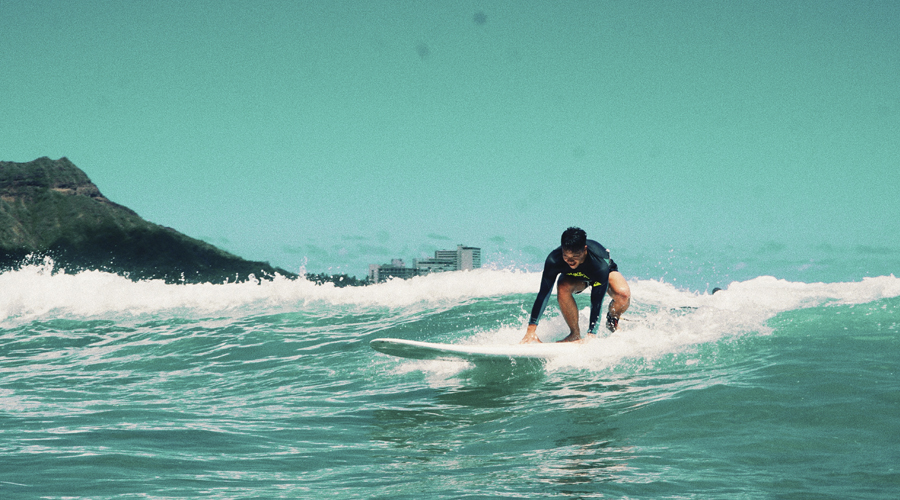
Essential Ocean-Friendly Products
1. Reusable water bottle
Reusable water bottles are being used widely these days and Different types of reusable water bottles including insulated, non-insulated, leak proof will help consumers ditch the traditional disposable plastic bottles. The best one available at Amazon is Brieftons Glass water bottles with stainless leak proof lid. In terms of cleaning up and carrying around, they are hassle-free.
2. Reusable straws
Reusable straws are durable and helping minimize the waste in the world. They are offered in many varieties but the best one available at Amazon is Flyby Portable Reusable Drinking Straws. They are portable, can be contained in a small key chain container. They are designed to match the temperature of drink being consumed and are very easy to wash.
3. Reusable plates
These plates look exactly like plastic ones and are made from unbreakable melamine. They can be washed and used countless times instead of being thrown away. They come in so many prices, shapes and colors but the ones recommended on Amazon are by Gibson Studio. They are for everyday indoor/ outdoor use and can be washed easily.
4. Reusable Coffee cup
Reusable coffee cups will surely minimize so much waste around us. They are now being carried and used by many. The different types available in market are glass, ceramic, stainless steel, bamboo including insulated and non-insulated forms as well. The best one being sold at Amazon is Juro Tumbler made from stainless steel and provides insulation to hot and cold beverages for several hours. The lid is very user friendly and it comes with steel straw too.
5. Biodegradable trash bags
Till now the trash bags have contributed so much to the waste on earth. But we can replace them with biodegradable trash bags they will minimize the plastic waste as they are mostly made of paper, cornstarch and organic materials. They come in different prices but in terms of toughness, material and price, Amazon recommends one by Brand Inwaysin. From being cheap and degradable, they are odorless and non-toxic as well.
6. Edible cutlery
Besides being reusable and eco-friendly, edible cutlery such as spoon and forks come in variety of flavors. Made by baking of rice flour, spices, and other edible ingredients, the edible cutlery is something you need to look into if you wish to go zero-waste.
7. Bamboo chopping board
Bamboo chopping boards are considered great for cutting vegetables. Bamboo is grass but is somewhat similar to wood. They can be bought in different shapes and sizes according to your choice. The one featured at Amazon is Navaris bamboo wood cutting-board, it is used for cutting vegetables and can be used to serve meat, cheese and fruits etc.
8. Charcoal water filter
They are very effective in water purification as they are very good at removing chlorine, sediments, volatile organic compounds, taste and smell. They are available in market at different prices but the one recommended by Amazon is by Pure Green. The material used is cotton which removes the impurities and the quality is no less than the original filters.
9. Reusable coffee filter
These coffee filters are made up of Stainless steel. They are eco-friendly, easily washable and can be used again and again. They are also been claimed as better than the original ones allowing more oils to pass through. They are available in markets and online as well such as on Amazon and Walmart.
10. Plant-based sponge
These sponges are environment friendly as they are non-synthetic and made up of natural fibers. The other ones are made up of synthetic materials and are harmful for the environment as they pollute waterways and sit on landfills. They are available widely in the market
11. Silicon baking mat
They definitely help ensure cleaner and green lifestyle. Instead of using parchment or butter paper which is thrown away every single time, silicone baking mats can be used again and again. It also cuts down the need for cooking oils and cooking sprays resulting in more simpler and cleaner environment.
12. Compost bin
They are great at keeping environment clean as they speed up the decomposition process. Basically the compost bin decomposes all the organic materials thrown in it and turns it into compost. The bins come in various shapes and sizes made up of stainless steel and plastic.
13. Natural dishwasher
These natural dishwashers are free of phosphate and made from sustainable ingredients that are harmless to both the environment and water resources. They are available in market at different prices one declared best by Amazon is Method Dishwasher as it is mineral based, non-toxic, hypoallergenic and pocket friendly. It also helps dishes, glassware sparkle.
14. Reusable Sandwich bags
Such sandwich bags are usually made up of silicone or cloth. They can be washed and are microwave safe mostly. They are eco-friendly as they are non-toxic and lead free. They help in clearing up the environment as they don’t end up in trash after use every single time.
15. Reusable fabric clothes
With fast changing fashion, factories release so much of the dangerous chemicals with new production. Also, fabrics such as nylon and polyester made up of synthetic materials contribute to the pollution greatly. By shifting to more durable and eco-friendly clothes made up of fabrics such as cotton, linen etc. we can eliminate the toxicity.
16. Beeswax wraps
The beeswax wraps are reusable, easy to use and natural way to contain food. They are made up of organic cotton that is coated with naturally derived beeswax, jojoba oil and tree resin. These are durable, plastic free and eco-friendly. Also, they are washable and biodegradable which is super great for the environment.
17. Biodegradable dog waste bags
These are great alternatives to dangerous polythene bags that damage the flora and fauna. These bags are mostly made up of plant derived resins, vegetable oils and cornstarch that completely decompose if given right conditions. They are available in store and online as well. The one recommended by Amazon is by My Alphapet.
18. Electric toothbrush
As compared to the traditional toothbrushes, the electric tooth brush is more eco-friendly as it does not end up in landfill as often. They are durable and last for a longer time while you have to change the other toothbrush every three months, ultimately contributing to the waste.
19. Bamboo toothbrush
Bamboo tooth brushes are eco-friendly as they are fully biodegradable. They are also renewable, sustainable, and provide the same cleaning quality as a normal tooth brush. Besides from being completely hygienic, they are recyclable, reusing and composting. The best one available at Amazon right now is by Brush with Bamboo.
20. Bamboo bags
Bamboo bags help keep the environment clean and green. As compared to the plastic bags which are non-biodegradable and add so much to the trash, bamboo bags are reusable and are completely biodegradable. Besides from being eco-friendly, they come in many beautiful shapes and sizes.
21. Bamboo comb
Bamboo combs are environment safe as compared to the plastic combs as these are hundred percent biodegradable and decomposable. These do not end up in trash as they are turned into compost eventually. Apart from being eco-friendly, they are great for hair. These are available at Amazon and other online stores at very reasonable prices.
22. Bamboo safety razor
These are a great alternative for plastic razor as there are millions of plastic razors that end up in trash every year and ultimately in the earth. It is disaster for the environment. With bamboo razors, only the blade has to be changed according to the individual’s need. Also, these are completely plastic free and biodegradable. Hence, they do not cause any damage to the environment.
23. Organic candles
Organic candles are actually very eco-friendly as they are made up of natural products such as cotton, wood wick and vegetable ingredients like coconut wax, beeswax. These are non-toxic for the environment as they don’t pollute the air. These are completely recyclable and are available in different colors, shapes and scents.
24. Shampoo bars
The shampoo bars are so much better for the environments as they are package free. They do not come in plastic bottles which end up in trash every month. Also these shampoo bars are mostly made up of organic products such as coconut oil, sodium hydroxide etc.
25. Packaging free soaps
These soaps come without the fancy packaging and make a great choice for the environment. As soaps are frequently used and so the packing must end up in trash, the packaging free soaps are extremely eco-friendly. These are available in stores alongside the other soaps and available online as well.
26. Cotton bag
Cotton bags can be reused thousands of times as compared to the plastic bags. These are synthetic free and hence do not add up to the waste when being thrown away. Instead they decompose in the earth without causing any damage to the environment. Also, with cotton bags being used, the production of plastic bags would stop which would result in less air pollution.
27. Seed infused pencil/sprout pencil
Sprout pencils are eco-friendly as all of its aspects are non-toxic and sustainable. It is made up of sustainably harvested wood, contains plantable seeds and its core is made up of clay and graphite. You even have the option to choose the seeds you like e.g. herbs, vegetable or flower and the best part is, they usually sprout within a week after planting.
28. Plantable paper
Plantable papers are also biodegrade-able and are made of recycled material which means no trees are harmed. In addition to this, they are embedded with seeds and you can place them in mud and expect a plant to grow while the paper composts away. There is no waste left behind.
29. Organic scrubber
One of the best ways to exfoliate your body is with the help of Organic body scrubber. They are easy to use and nourishes your skin as they are made of skin nourishing ingredients which are part of our diet as well like coffee beans, sugar, pink salt, coconut oil and more.
30. Natural face wash
Natural face wash are eco-friendly as they are made of natural ingredients. They are skin friendly and most of them come is eco packaging which is plastic free. There is an increase in trend for these products as they are free of chemicals.
31. Organic moisturizing cream
As organic is something which is grown without modifying the genetics, using chemicals or artificial stuff, it is definitely good for the skin. In addition to this, using such products is beneficial for the environment as less chemical waste enters our rivers and oceans in this way.
32. Microbeads free toothpaste
Microbeads free toothpastes are blessing to the environment. The presence of microbeads pollutes our water sources and is harmful for aquatic life. Therefore, it is better to use microbeads free toothpaste. You can find a couple of such toothpastes on amazon as well.
33. Biodegradable Makeup Remover Pads
We all know that how important are these makeup removal pads and now that they are made up of ingredients like wood pulp and cornflower makes then bio-degradable and eco-friendly. Some of these can even biodegrade within a month.
34. Organic Nail-Color
Organic nail colors are eco-friendly as well as better for your nails because of the absence of many harmful toxins which are often found in traditional nail colors. Some examples of organic nail color include OROSA’s Pure Cover Nail Paint, AILA’s Nail Lacquer and Sundays’ Nail Polish.
35. Toxin-free Detergents
Every other day we hear about the harmful impacts of different toxins and wonder why don’t we avoid using anything which contains toxins. If not all, we can definitely change some of the products that are toxin free. Luckily, we have safe detergents that can be considered. E.g. Mrs Meyer’s Clean day laundry detergent and Seventh Generation Natural 4X Concentrated Laundry Detergent.
36. Biodegradable Cotton Bud
Instead of using plastic cotton buds, go for biodegradable cotton buds which come in recycled paper box. As we all know that too many plastic cotton buds end up in oceans and landfills, they are harmful for the birds and marine animals. A simple shift in our actions can minimize the risk for them.
37. Biodegradable Sanitary pads
Biodegradable sanitary pads are safer to use as they do not contain bleach which has carcinogenic dioxins. Some of the Biodegradable pads you can find on Amazon are Organyc 100% Certified Organic Cotton Feminine Pads, Seventh Generation UltraThin Pads with Wings, Regular Absorbency, Chlorine Free Pads and Veeda UltraThin Super Absorbent Pads, Chlorine, Pesticide, Dye and Fragrance Free.
38. Jute Baskets
When going out for picnic, you would certainly want to carry along picnic basket. The basket should not be made of plastics, so you can opt to buy a jute basket made up of jute fibers. The jute fibers are renewable, sustainable, and ecofriendly.
39. Coffee exfoliator
Used coffee beans can be upcycle to make beauty care product. Instead of using exfoliators comprising microbreads, look for natural alternatives. Several companies provide with an option of buying natural and organic exfoliating agents.
40. Newspaper pencil
Instead of using pencil made from virgin wood, buy a pencil made out of recycled or sustainable materials. TreeSmart is a company which turns recycled newspaper into pencils, so the pencils are environmental friendly, recyclable, and climate friendly.
41. Natural Rubber Gloves
The use of synthetic plastics or latex gloves release toxic chemicals into the environment. You can prevent this from happening by using natural rubber gloves made from plant-based materials. Such gloves are environmental friendly and do not release toxins.
42. Natural handwash
Synthetic handwash contains harmful chemicals which can cause allergic reactions to sensitive skin. Besides that, it also poses negative impacts on environment. The use of natural handwash made from natural ingredients such as essentials oils and fruit extracts prevents the release of harmful chemicals and do no not cause skin infections.
43. Food storage containers
Reusable collapsible food containers eliminate the chance of plastic waste ending up in the oceans and landfills. In addition, these containers can be adjusted in size as per the contained food so they are easy to use and occupy less space.
44. Sustainable Socks
Socks comprising polyester may keep you warm and once they are no longer in use or in washing machine, the release microfilaments which are detrimental for environment. Choose to buy 100% organic cotton socks, as they are long lasting and environmental friendly.
45. Organic Cotton Jeans
Conventional jeans use large amount of water and enzymes during its processing phase. Buy sustainable organic cotton jeans from online store. Jeans by prAna are organic, trendy, and ecofriendly.
46. Low flow shower head
Large quantity of water gets wasted while taking bath. Low-flow shower head provide you with an option of conserving water. The water is discharged as a mist. They are also equipped with heat regulators so they help minimize heating cost.
47. Compostable Dental Floss
Dental floss is often made of synthetic fiber which is non-biodegradable. But, now you need not to worry about the environment while using dental floss because dental floss made of silk and candelillla wax is available in the market. It is compostable and does not result in aquatic creatures entanglement in the synthetic strings.
48. DIY chandler
Instead of buying new chandler for your living room, you can create one on your own using old beverage cans or plastic bottles. But, use energy efficient bulbs or LEDs to make sure that the chandler does not melt because of over-heating.
49. Electric vehicle
All car companies have or are developing electric cars. But if you want the best electric car, it's a Tesla. This car is fully electric and has amazing tech built into the car. Tesla is 10 years ahead of the competition, updates are free, and this car has the ability to drive autonomously.
50. Solar charger
Solar charger makes the use of solar energy to supply electricity to electrical appliances. It does not need to be in the sunlight all the time. Equipped with solar cells and charge controller, a portable solar charger can charge flashlights, batteries, and mobile phones. A perfect product to minimize carbon footprint!
51. Ceramic planters/pots
Decorate your homes with ceramic plants or pots which are eco-friendly and sustainable. Pots of different sizes and shapes are available in the market which can be used for live and ornamental plants, both.
52. Upcycled handbags
Fast fashion calls for using accessories which are trending, and what could be more eye-catching than carrying an in-design handbag? Most of the handbags are made out of leather acquired through unsustainable means, but we have an option of opting upcycled handbags designed from recyclable materials. One such example is Myra bags, made from old canvas tarps and tents.
53. Eco-friendly footwear
Plastic slippers or flip flops make up a major portion of marine debris, threatening lives of seabirds and mammals every year. The flip flops have the potential of reaching the food chain as they degrade into microplastics. There are several companies such as Adidas and GumShoe which have been striving to provide customers with recyclable footwear made out of recyclable plastics.
54. Smart Plugs
Most of our devices such as LCDs, TV, and monitors keep consuming energy even when they are plugged off and the cost of it does not only get added to our electricity bills but also to our individual carbon footrprint . So smart plug could serve as an energy efficient device, as it helps in monitoring and managing home energy usage while reducing the vampire energy losses
55. LED lights
Unlike fluorescent and mercury lights, LED lights require one-time investment as these are bit costly as compared to the conventional lights. But, given their added benefits such as energy efficiency, lower carbon emissions, and safer-handling, the energy saving LED lights need to be preferred.
56. Ecofriendly gift wraps
May it be a holiday season or an occasion; we all share a custom of exchanging gifts. We try our best to present our relatives or friends with the most unique gift, but we rarely give a thought to packaging which can ultimately make its way to the oceans. To make the wrapping sustainable, we can wrap a gift either by a newspaper or available cereal boxes.
57. Wooden Sunglasses
May it be a bright sunny day or a formal gathering; we do not forget to carry along our sunglasses. Till now, you must have only seen plastic frames for the sunglasses, but did you know environmental friendly wooden glasses are also available in the market? Polarized glasses By Woodies are made up of walnut wood and protect eyes from harmful ultraviolet radiations.
58. Eco-friendly Wrist Watch
Wrist watches often have straps made up of rubber, which can accumulate in the food chain when it ends up in the ocean. But a bamboo watch by Zarnsaxa can save you from this worry, and help protect aquatic creatures. These wooden, lightweight, eco-friendly, and economical watched might become next item for your wish list.
59. Natural Deodorant
Chemical free deodorants are not only safe for oceans but also for human health. Made out of essential oils such as lavender and lemongrass, they do not cause skin allergies and are environmental friendly. In addition, such deodorants are often sold in recyclable packaging thus they also help in addressing the issue of plastic packaging.
60. Recyclable Toilet Paper
Instead of using toilet paper made out of virgin paper and fiber, we must look for sustainable alternatives readily available in the market such as 100% recyclable toilet paper which is made from recycled papers donated or collected from schools or offices. One example of such toiled paper could be 100% recycled toilet paper by Marcal.
61. Ecofriendly Smartphone Cover
Most of us now carry smartphones with us and we use plastic or leather cases to keep our phones protected. But are these cases sustainable? No. These plastic cases are another rising source of oceanic pollution. To curb the challenge, different companies have introduced sustainable designs and materials, one such company is Urban Armor Gear, which manufactures plant-based cases for smartphones and tablets while providing a wide range of colors.
62. Jute Rugs
If you are looking for an option of ocean friendly product for your room or living room, then jute rug should be your choice. These rugs are made of jute fibers, which is a renewable and eco-friendly material. In addition, it reduces the individual’s contribution to global carbon emissions and do not require synthetic fertilizers or pesticides for its cultivation.
63. Refillable Spray Bottles
Millions of plastic bottles end up in oceans each year, which do not only include the water bottles but also the spray bottles which are used for cleaners. One way of eradicating the use of plastic bottles is to use refillable spray bottles which eliminate the chance of carbon emissions and in turn ocean acidification.
64. Fluoride-free Mouthwash
Fluorides from toothpaste and mouthwash end up in the oceans and pose harmful effects for aquatic life. Natural antiseptic mouthwash not only kills the germs present in the mouth but also helps save the species from the detrimental impacts of fluoride exposure. Mouthwash by Listerine is chemical free, natural, and comparable in to commercially available mouthwash.
65. Biodegradable Facemasks
The sudden surge in COVID-19 cases has led to the increased disposal of facemasks in the environment. Few cases have been reported stating the entanglement of aquatic creatures in the facemasks. This, however, can be prevented by using biodegradable and ecofriendly facemasks made out of natural material such as hemp or cotton.
66. Organic lip-balm
Cosmetics industry makes the use of toxic chemicals and raw materials which is not safe for human and environment health both. The use of natural ingredients in such products could provide an ecofriendly option. Organic lip-balm by Sky Organics is USDA approved and is made up of essential oils. It comes in different flavors and sustainable packaging.
67. Biodegradable baby diapers
Diapers are mostly made of synthetic plastics, which is harmful for the sensitize skin of babies and also for the oceanic health. Bamboo Nature manufactures diapers from renewable and sustainably sourced bamboo. These diapers have potential to absorb maximum moisture content and are free of toxic chemicals. So, these biodegradable diapers neither cause allergic reaction and nor discharge pollutants into the environment.
68. Eco-friendly baby bibs
Babies need to put on bibs which can help save their clothes from tough food stains. But, the bibs comprise synthetic plastics which degrade into microfilaments. The use of reusable bibs made up of 100% cotton is an ocean-friendly option. Safer in its texture, it would not leave rash on baby’s face and would also degrade on its own upon disposal.
69. Eco-friendly non-toxic Teether
Baby teether is made of plastics which contain toxic BPA. Such teethers are harmful for human and oceanic health. Non-toxic and BPA free teethers, such as manufactured by The Tot are safer to use. They come in a variety of designs which the babies would find appealing and are made from either 100% natural rubber or food-grade silicone
70. Reusable Table mats
Table mats can easily get dirty because of the dropped food and are discarded or replaced. But the reusable and washable mats can provide a sustainable alternative. 100% recycled polyester mats could be found in the market, which can be easily cleaned and cleaned. Besides that, if not in use, they can be folded and kept at an accessible place to be used later.
71. Eco-friendly Laptop Sleeves
Carrying a laptop might not sound easy without a laptop bag/sleeve. Pad & Quill provides you with an option of purchasing handmade bags which are eco-friendly and sustainable as they are made of natural and sustainable sourced materials which are FSC certified. The bags are easy to carry, washable, and durable.
72. Eco-friendly Screen Protector
Each one of us wants to prevent our phone and laptop screens from getting damaged. For this, we use plastic protectors which are not environmental friendly. The recycled glass protector can provide with a sustainable option, as glass in 100% recyclable and helps mitigating the release of carbon emissions when it is recycled.
73. Ecofriendly Headphones
Headphones by AudioQuest are toxic free and biodegradable as they are made of biocellulose which is a plant based material. Unlike, the commonly used headphone, these headphones do not use synthetic rubber or plastics, hence, they are toxic free. In addition, they are packed using sustainable packaging thus it further contributes to their sustainable design.
74.Compostable/Biodegradable lids
Lid of the containers and cups make a major portion of marine debris. Compostable and biodegradable lids are eco-friendly choice as they neither degrade into harmful by-products nor release toxic chemicals. The lids made out of wood and natural materials can are available at cheaper prices. They provide a benefit of being reusable and recyclable.
75. Eco-friendly Fishing Nets
Fishing nets threaten the lives of many aquatic creatures including the live of non-targeted endangered species. We are already aware of fabric nets but we might have not heard of PVA fishing nets which are ecofriendly and can dissolve in cold water. Nets designed by Kaaka brand are harmless, durable, and free of toxic chemicals.
76. Cotton Pillows
Pillows made of 100% cotton or recycled polyester can help save the oceans as they do not release microfilaments into the environment. The organic or natural-sourced covering of the pillows also serves to play a role in protecting oceans. The pillows by OrganicTextiles are made of 100% cotton, are washable, and free of toxic chemicals
77. VOC-free Paint
Volatile organic compounds are harmful for the environment as they pollute the air. These compounds result from drying paints. VOC free paint could be your ideal choice while choosing to go environmental friendly. The paints by TriCoPolymer provide with a range of paints which are toxin free and are ecofriendly. The use of such paints would help minimize air pollution and in result world’s oceans.
78. Recycled glass lamp
Despite being 100% recyclable, most of the times glass isn’t recycled. You can choose to go sustainable by purchasing a lamp with has a base or cover made from recycled glass.
79. Solar-powered Speakers
While traveling or celebrating a birthday of your friend in an outdoor setting you would probably need an audio system. Solar powered speakers save you the cost of electricity and batteries, as they can be powered by naturally available solar energy. Equipped with solar panel, transmitter, and convertor, the speakers are the most convenient tool for minimizing travel footprint.
80. Sustainable Jewelry
You may like to purchase jewelry which is sustainable and also contributes towards the cause of ocean protection. Passport Ocean is an e-commerce, which sells jewelry and donates 15% of its sale amount to marine conservation organization, thus helping foster ocean protection by keeping the trend of fashion alive!
81. Eco-friendly Hangers
Plastic hangers are regarded as the plastic straw of fashion industry. The use of stainless steel or wooden hangers is an environmental friendly option. Wooden hangers by AMFUKO and stainless steel hangers by BEAUTLOHAS would not only help organize your wardrobe but will also minimize the chance of plastics ending up into the oceans.
82. Rechargeable Flashlights
Out for camping, need a source of light? Well, the easiest way to carry along rechargeable flashlights. You can either get flashlights which are compatible with rechargeable batteries or look out for solar powered flashlights. You can charge the lights during the day time and use the save recharged battery or flashlight during night time. Save electricity, reduce your carbon footprint.
83. Wooden Toys
Plastic toys are harmful for children and oceans as they contain BPA. An ecofriendly alternative to plastic toys is wooden toys, made from certified sustainably sourced wood. The toys do not release any harmful compounds and are non-toxic for oceans and kids. Besides that if disposes, they can be degrade naturally without having a need to go through any long degradation cycle.
84. Eco-friendly Stickers
Vinyl stickers are not eco-friendly. On top of that, few stickers also have added fluorescence which can be detrimental for environment. While purchasing stationary supplies, but sticker which have toxin-free water-based adhesives.
85. Eco-friendly Notebook
Why buy a notebook made from virgin paper when you can get notebooks made out of recycled paper? Prefer buying notebooks which comprise recycled paper as it would help minimize carbon emissions. Besides that, the eco-friendly notebooks have plastic free book cover so it would also help save oceans by eliminating the need and disposal of plastic covering.
86. Plastic-free Hair Ties
Hair ties contain the microfilaments, which ends up in water bodies and accumulate in the food chain. Using 100% recycled cotton ties can help save the oceans by preventing the discharge of microfilaments into the oceans. Such cotton hair ties are elastic and durable, and do not pose any harmful impacts.
87. Wooden Keychains
Plastic cases or keychains are another threat looming our oceans. Customized wooden keychains are available in the market, and the super benefit is they can be customized as per the needs and requirements of the buyer. The wooden keychains are ecofriendly, sustainable sourced, durable, and recyclable.
88. Refillable Markers
Office and schools supplies comprise most of the plastic products. Refillable markers provide an option of refilling the inks when the marker gets dried or when it cannot be used further. Instead of dumping the marker in the trash can, prefer buying refillable marker. You may want to explore markers by Marsh, which come with large refillable barrel.
89. Sustainable Furniture
Plastic chairs and table again add to plastic footprint. Choose to buy FSC certified furniture or the one which is sustainably sourced. Sustainable furniture could also include furniture made from upcycled material and without making use of toxic adhesives. Look out for the local brands, as it they would be economical and would not contribute to global carbon emissions during shipment.
90. Phosphate-free Car Wash
Car washing could involve chemicals which comprise phosphates. The discharge of phosphate contaminated cleaners result in producing algal blooms in water bodies resulting in oxygen depletion and death of aquatic creatures due to suffocations. Choose to by phosphate-free cleaner for the car such as eco-friendly rust remover such as the one offered by Evapo-Rust, it is toxic free, biodegradable, and water based.
91. Smart Thermostat
Besides regulating the temperature of home or office, smart thermostat minimizes carbon emissions as it is energy efficient. It monitors and regulates the surrounding temperature on its own and does not work unnecessarily, thus cuts off heating and cooling cost. Programmable thermostats by Google Nest can be configured with the smart devices and are easy to control and program.
92. Solar powered Lamp
Decorate your room or living room with a solar powered lamp. Keep it near a window where it can receive maximum sunlight during day time to get its battery recharged. The recharged battery would illuminate the room during night. In addition, the lamp can be directly powered using solar energy as it is equipped with the required technology. So you need not to turn on the lights as you can make most of the natural daylight.
93. Portable Coolers
Lined with insulation, the portable coolers are your go-to-items if you wish you minimize plastic footprint by cutting off the use of plastic bottles. Easy to carry, durable, and sustainably designed coolers can help minimize marine debris.
94. Organic Fertilizer
The world waste 40% of produced food and contributes to the significant portion of greenhouse gases. In doing so, we also waste the large quantities of water which gets utilized during the production of food and discharge excessive toxic chemicals into the environment in the form of pesticides and fertilizers, but this could be prevented by using organic fertilizer made out of composted food scrap.
95. Sustainable Adhesives
Adhesives such as glues and gums contain toxic chemicals which are harmful for the environment. When you go shopping, looking for glues or gums of organic origin such as plant-based carbohydrates or proteins.
96. Energy efficient Air Conditioner
In earlier times, our rooms had noise creating, CFCs containing, energy-intensive air conditioners which had created havoc for the atmospheric ozone. But now, the energy efficient air conditioners have saved us from the misery of pollutant greenhouse gas emissions. They also save us the energy cost and regulate the room temperature. One of the ideal choices could be portable air conditioners by Black+Decker.
97. Sustainable Washing Machine
Conventional washing machines had high energy and water consumption rates. But with the advanced technology available, the current washing machines are energy efficient and use less water. The light weight and compact washing machines by GAYBJ are equipped with time controllers, so you can choose to adjust the washing cycle to limit the water consumption.
98. Recyclable office card
Laminated office cards have no value once they are used and they get thrown away or are shredded. The shredded microplastics add to the marine debris. Using recycled cards made out of cardboards is an environmental friendly choice. You may come across companies which do provide with the service of recycling cardboards to turn them into office cards.
99. Eco-friendly Wallet
Leather wallets could increase the amount of toxic pollutants such as chromium in our environment. The use of sustainable and eco-friendly wallets can help save our oceans from such toxic chemicals. Wallets by Boshiho are made of cork fabrics. The added advantage of these wallets is, they are durable, economical, light weight, and contain all the necessary items such as cards and currency.
100. Cardboard Box
Instead of using plastic box for gift packaging or organizing things in your cupboard, use recycled cardboard boxes. The boxes would provide you with a sustainable alternative to plastic as these are eco-friendly, biodegradable, and reusable. Different boxes of cereals or accessories could be used or you may choose to collect/purchase the cardboard boxes from recyclable companies.
101. Solar cooking System
Instead of using natural gas for cooking, you can purchase solar cooking portable range. It would help minimize your carbon footprint and would provide you with warm and delicious food whenever and wherever required, provided you it received the required sunlight.

Organizations You Can Trust
If you want more advice on how you can help make a positive impact on the ocean,
here are some organizations where you will find more information. You could also reach out to
these reliable organizations to make a donation or if you have any more questions or concerns.
here are some organizations where you will find more information. You could also reach out to
these reliable organizations to make a donation or if you have any more questions or concerns.
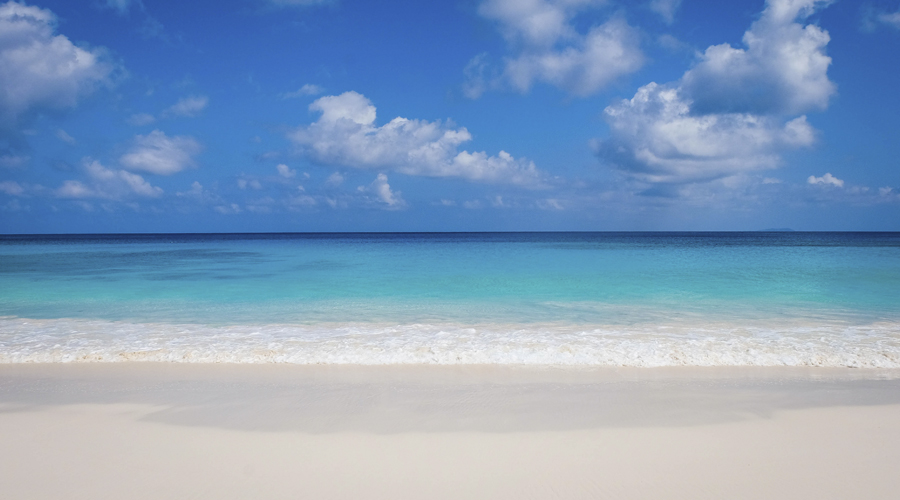
More Ocean Information
Do you want to dig deep into what the ocean is? Are you here to explore the fascinating facts about this majestic water body? Hold tight, we have got everything compiled for you...
BASIC OCEAN INFORMATION AND FACTS:
WHAT IS AN OCEAN?
An ocean is a huge body of salt water extending from one continent to another. These compose most of the planet’s hydrosphere. They make up one-third of the earth’s surface. Seas are small entities that once joined make up the mighty oceans. There are five main oceans namely:
PACIFIC OCEAN
Finding its roots in the Portuguese and Spanish language, the name Pacific is derived from the word Mar Pacifico, meaning peaceful area. Making up 28% of the world's surface, comparable to the global land surface, the ocean covers an area of about 155.5 million square kilometers, it is considered to be the largest ocean among all five.
On the world's map, you can locate it between Asia, Australia, Western Hemisphere, and the Southern Ocean.
Besides, being known for active volcanoes and earthquake sites, the ocean is also considered to play a vital role in the world's fisheries. According to Food and Agricultural Organization (FAO), the Northwest Pacific region accounted for the highest global fishery catch in 2017, making up 25% of the total, followed by Western Central Pacific (15%), Southeast Pacific (9%), and Pacific Northeast (4%).
Few of the famous species of the Pacific ocean include; Yellowfin tuna, Peruvian anchovy, Alaska pollock, and Pacific cod.
ATLANTIC OCEAN
The name Atlantic has a Greek origin and is derived from the word Atlantis thalassa, which means Sea of Atlas. With a depth of about 3600 meters, the Atlantic Ocean covers an area of about 76.7 million square meters - more than seven times the size of the United States.
Located between Europe, Africa, the Arctic Ocean, the Southern Ocean, and America, the Atlantic Ocean is the second-largest among the world's oceans.
It provides important sea routes for economic activities and serves as a site for petroleum production. Furthermore, the Ocean is a vital resource for global fisheries. According to FAO, the Atlantic Ocean accounted for 28% of the global catch in 2017.
The notable species of the Atlantic Ocean include Atlantic cod, herring. Gobies, lobster, and European anchovy.
INDIAN OCEAN
As the name suggests, it is named after the country of India which covers most of the ocean’s northern boundary. With an area of about 68 million square kilometers and an average depth of about 3,890 meters, it is the third-largest among the world’s five oceans.
On the world’s map, it can be easily located between Asia, Australia, Africa, and the Southern Ocean.
The ocean is known for its oil reserves and accounts for about 40% of the world’s oil production. Furthermore, it also plays an integral role in contributing to the fisheries sector. As estimated by FAO, 15% of the global catch came from the Atlantic in 2017 making it the third-largest global fisheries contributor.
The important species of the Atlantic Ocean include shrimps, tuna (Skipjack and Yellowfin), haddock, and lobster.
ARCTIC OCEAN
The Arctic ocean is the smallest of all five, covering an area of 14 million square kilometers. The name the Arctic has Greek roots and is derived from the word artikos, meaning northern or near the bear. As known by most of us, it is mainly covered by ice sheets which are surrounded by large water bodies during high temperatures.
The ocean plays an integral part in regulating climate patterns. In addition, it also adds to the share of global catch which is insignificant in comparison to the Pacific and the Atlantic Ocean.
The notable species of the Arctic include Polar bears, Beluga, and Narwal. These species are considered to be the keystone species of the region but are also being pushed towards the brink of extinction due to unsustainable practices of humans.
In 2019, starving polar bears were reported in industrial areas of Russia - miles away from its habitat!
SOUTHERN OCEAN
The Southern Ocean, formerly known as the Antarctic Ocean, was added to the list of Ocean basins just recently and has been recognized by the U.S. Board on Geographic Names. On the world’s map, it can be located in the Southern Hemisphere towards the south of 60 degrees South latitude. Covering an area of about 20.33 million square meters, it is the fourth largest ocean.
The most important feature of the Southern Ocean is its important role in regulating global climate with its dominating Antarctic Circumpolar Current (ACC).
The notable species which survive in the extreme weathers of Antarctica include penguins, whales, seals, and a few species of fish families such as cod icefish.
OCEAN ZONES
In order to be able to study and understand the ocean in a better way, scientists divided the ocean into five zones or layers.
1. Photic or Epipelagic Zone
2. Mid-water of Mesopelagic Zone
3. Aphotic of Bathypelagic Zone
4. Abyssopelagic Zone
5. Hadal or Hadopelagic Zone
OCEAN GYRES
An ocean gyre is a large system of circular systems of rotating ocean currents formed by wind patterns and the earth’s rotation forces. The movement of these gyres makes the ocean conveyor belt that rotates the ocean water around the entire planet for regulating temperature, salinity, and nutrients throughout the ocean. The ocean creates various types of currents, together these large and persistent ones make up a huge system of currents known as gyres.
Each of the 5 main oceans has an ocean gyre that circles around them, having cold as well as warm currents. These 5 prominent gyres are:
GARBAGE PATCHES
Ocean gyres circle large, stationary, almost immobile regions of calm water. Debris gets into these areas and due to the lack of movement in these regions can stay in there and accumulate for years. The debris usually contains litter, fishing gear, and other trash known as “Marine debris”. The Indian Ocean, North Atlantic, and North Pacific Ocean all have garbage patches. These patches can be understood as big whirlpools of water that collect things in forming patches or certain locations.
There are about 5 Garbage Patches known so far, but the North Pacific Garbage Patch has three further subdivisions
The North Pacific or Great Pacific Garbage Patch is also known as the “Pacific vortex” is a gyre of marine debris in the central North Pacific Ocean. It spans from the west coast of North America to Japan and comprises the Western Pacific garbage patch and Eastern Pacific garbage patch. This patch could on its own make an entire 8th continent!
HOW TO CLEAN UP THESE GARBAGE PATCHES?
Oceanographers and Ecologists are greatly concerned about these garbage patches that are increasing in size day by day. Imagine these as the phenomenon of large whirlpools of water aggregating multitudes of garbage and unwanted plastic inside them and resulting in a soupy mass of debris, turning itself into an environmental nuisance. The biggest worry is the biodegradability or breaking down of the plastic in these patches. Unlike organic debris such as wood or metal, plastic does not break down into smaller pieces very easily. It might take hundreds of years to degrade. The plastic in the oceans mostly gets converted into smaller and smaller pieces that are ingested by marine animals resulting in them being killed at times.Most of the debris in these oceanic garbage patches consists of microfiber plastics that are difficult to be caught however the bigger plastic garbage bodies can be trapped and removed from the ocean. Scientists are continuously working on finding ways to clean up these patches. The conventional methods of vessels and nets would require a very long time and sums of money. Therefore, stopping plastic from making its way to the oceans should be the focus of 95% of our efforts while the rest of 5% must be on the cleanup strategies.
An organization known as “OCEAN CLEANUP ORGANIZATION” found by Boyan Slat, has invented a technique that consists of 2000 feet long contraption that is basically a 4 feet wide pipe that leaves a 9-foot skirt hanging gown in the ocean. It gathers the plastic debris and consequently removes it. It is being debated as a less-efficient yet useful technique to at least begin with the cleanup of the multi-tons of plastic in the garbage patches. The first system called “System 001” was introduced in 2019 that unfortunately failed, however, a second fully operational, fully functional “System 002” is set to be employed in 2021.
Cleaning up is not easy however we as individuals can play the biggest role in cleaning up these patches by bringing individual-level changes in our behaviors such as:
MARINE BIOLOGY
Marine biology is the study of organisms that inhabit the seas, their behaviors, and their interaction with the environment. Oceans cover approximately 71% of the earth and thus impact the weather and climate of the earth directly and indirectly. This is why there is an ever-growing need of exploring the oceans. With a growing global population, the dependence of human beings on the ocean for food, shelter and other needs is increasing, making it necessary to study these important ecosystems. It also helps understand oceans out of curiosity and provides comprehension of what marine life is like. The word “marine” has French roots and literally means “sea.”
WHAT DOES A MARINE BIOLOGIST DO?
A marine biologist is like a detective trying to figure out the natural system. It wasn’t until the late 18th century and the early 19th century that the interest in oceans had grown considerably owing to more explorations of the oceans around the world, made possible by better transportation and voyages.
OCEANOGRAPHY
Oceanography is the study of the oceans and the phenomenon going on in those making use of sciences such as biology, physics, geology, meteorology, etc. It deals with the biological properties and physical aspects of the seas, as well as the topography and composition of the ocean floors. Oceanology is also known as ocean exploration. It determines the depth and extent of the ocean, the changes occurring in those as well as the environmental impacts of various activities on these.
WHAT DOES AN OCEANOGRAPHER DO?
In the most generic terms, an oceanographer studies the ocean.
Thinking about how oceans serve as habitats for a wide variety of fishes?
Scientists estimate that about 1 million species of animals are present in the oceans. About 20,000 species of fish are present in the oceans making it about 3,500,000,000,000 fishes present in the oceans.
Fish are commonly divided into three types:
1. Superclass Agnatha (the jawless fishes)
These fishes have suctorial mouths, a two-chambered heart, no true jaws, no stomach and have no bone or cartilage. They contain approximately 113 species of fish including lampreys, hagfish, etc.
2. Class Chondrichthyes (cartilaginous fishes)
These have paired fins, scales, and a heart with chambers, lack true bones, their exoskeleton is entirely cartilaginous, and have no lung or swim bladder. They contain approximately 940 species of fish including sharks, rays, skates, and chimeras, stingrays, etc.
3. Superclass Osteichthyes (bony fishes)
This is a diverse taxonomic group of fishes that have skeletons primarily composed of bone tissues. These include 26,000 different species out of which 95% are fishes. A few fishes included in this superclass are oarfish, catfish, clownfish, seahorses, herring fish, etc.
Do you know what’s the deepest we have gone into the oceans?
As known until now, explorer Victor Vescovo descended 35,853 feet into the Pacific Ocean making it a record of the deepest dive ever, and reached the bottom of the “Challenger deep” of the Mariana Trench, 200 miles southwest of Guam.
Interestingly, about 80% of the ocean is still left unexplored and according to some about 95% of it is to be discovered further. So, you still have got a chance to make a new record or discover the hidden world of water. Explore, learn, and share!




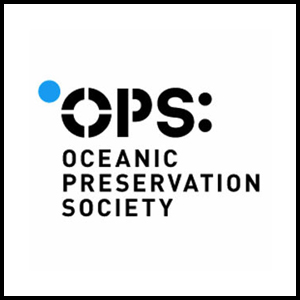
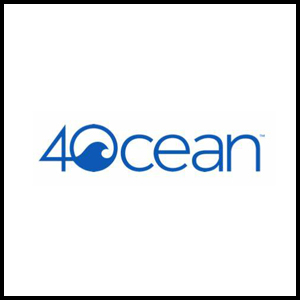
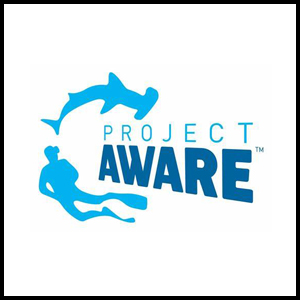
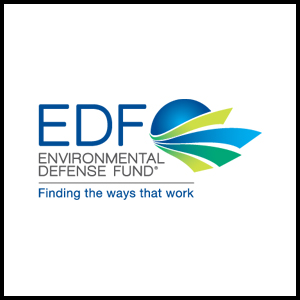

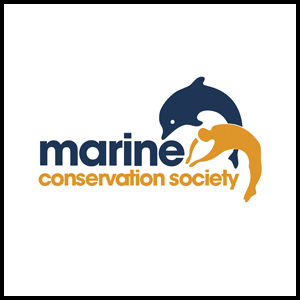




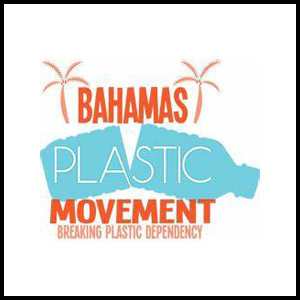
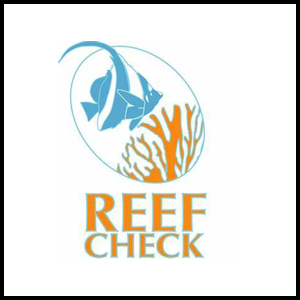




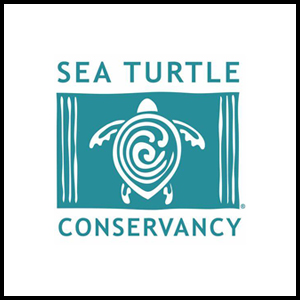
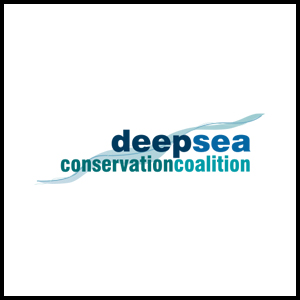



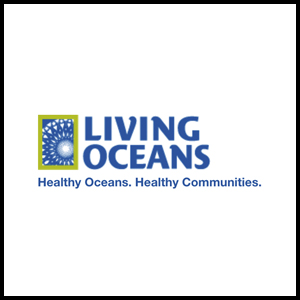
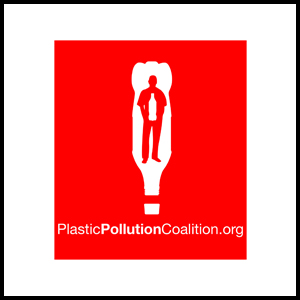


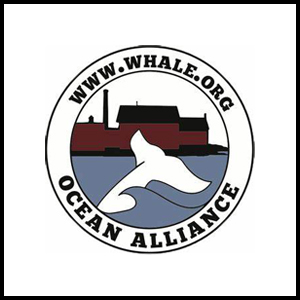
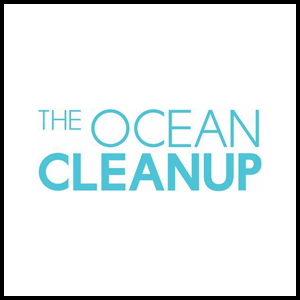

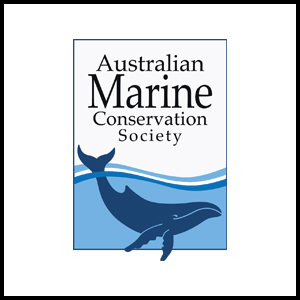


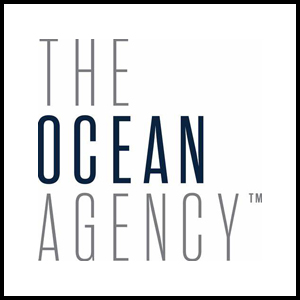
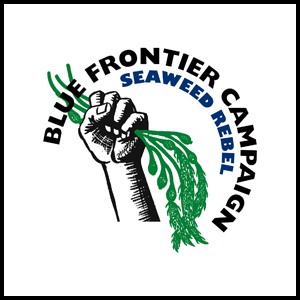
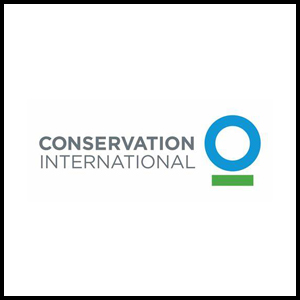

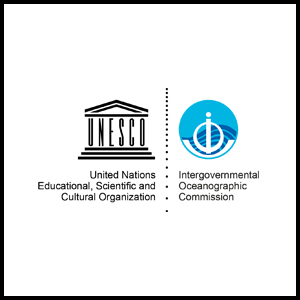
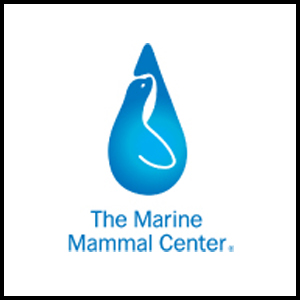
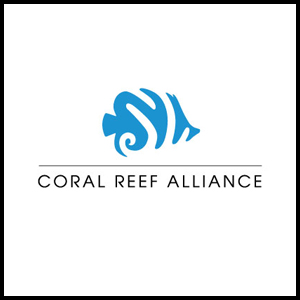

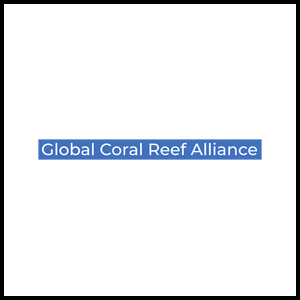
TRMABDEfzTQ
730S1RuAsqK
الأنابيب المتخصصة في العراق في مصنع إيليت بايب في العراق، نفتخر بتقديم مجموعة متنوعة من الأنابيب المتخصصة لتلبية الاحتياجات الصناعية والعلمية المختلفة. أنابيب الزجاج الخاصة بنا، المثالية للاستخدام في المختبرات، تم تصنيعها بدقة لضمان الوضوح والمتانة. هذه الأنابيب مثالية للتعامل مع ومراقبة التفاعلات الكيميائية في ظروف محكمة. يشتهر مصنع إيليت بايب بالجودة والموثوقية، حيث يحدد معايير إنتاج أنابيب الزجاج في العراق. لمزيد من المعلومات، قم بزيارة موقعنا: elitepipeiraq.com.
We thank all those people who left comments and ideas here. We created a new layout, so those comments are not visible here. We appreciate your comments, ideas, and support. Thank you.